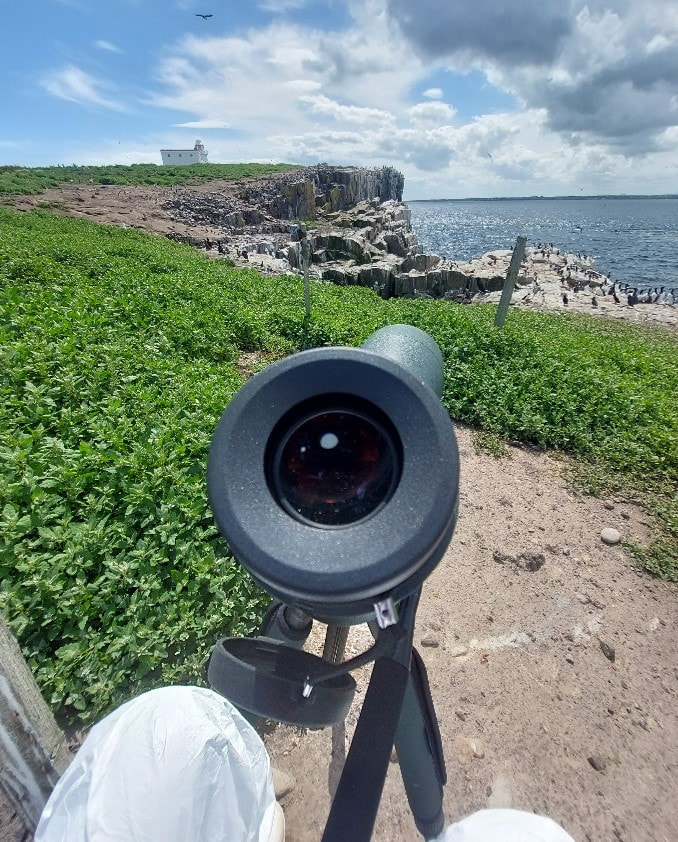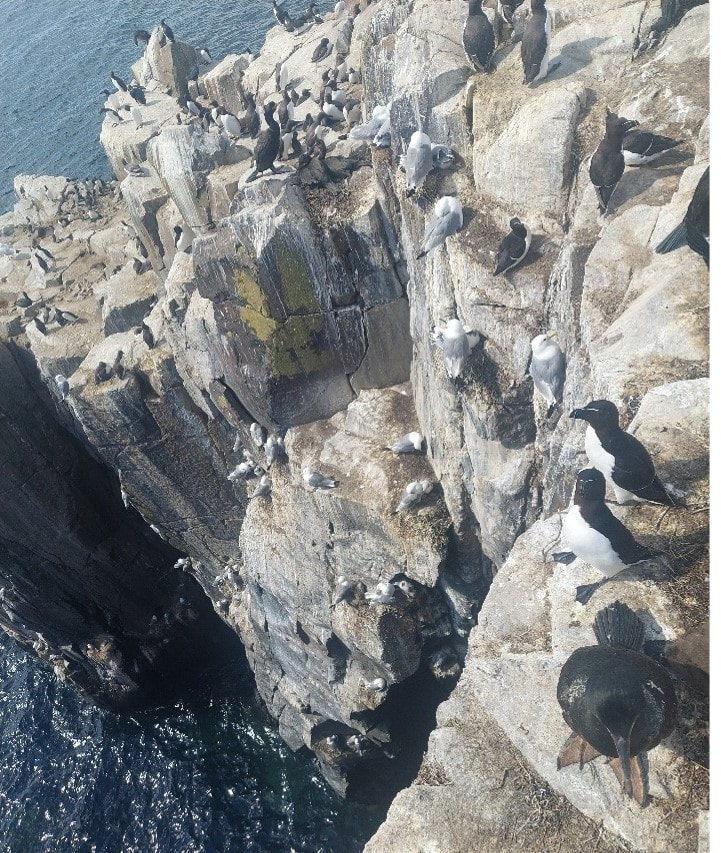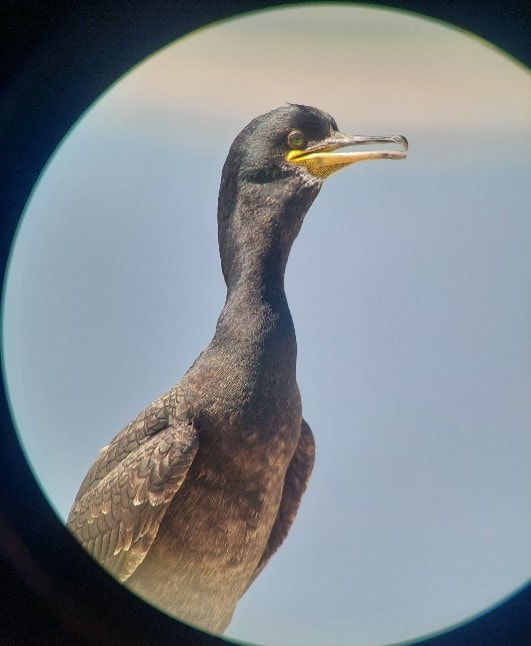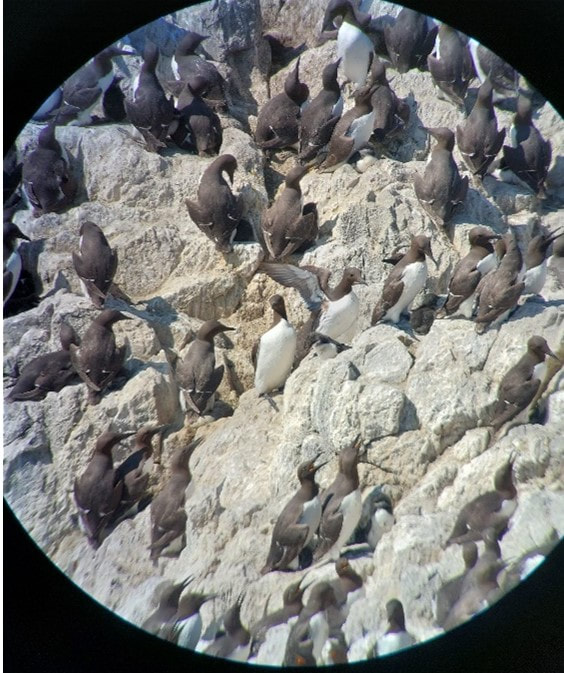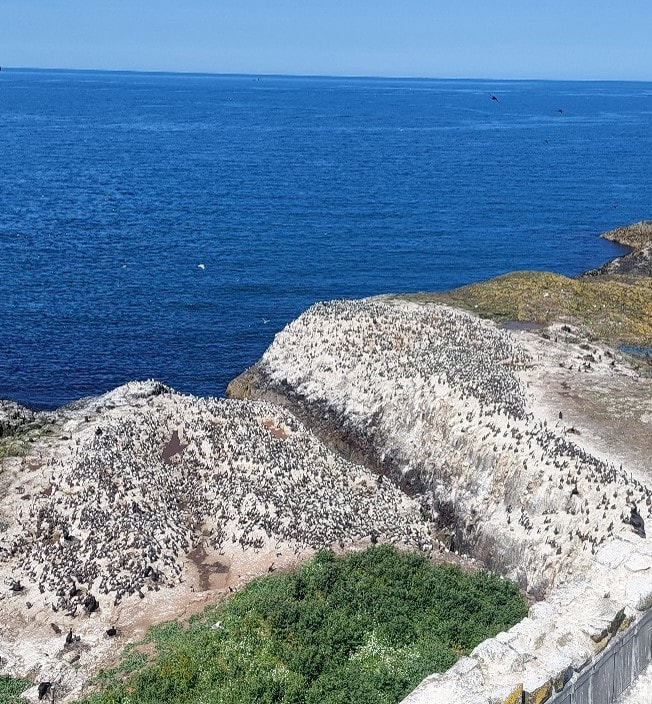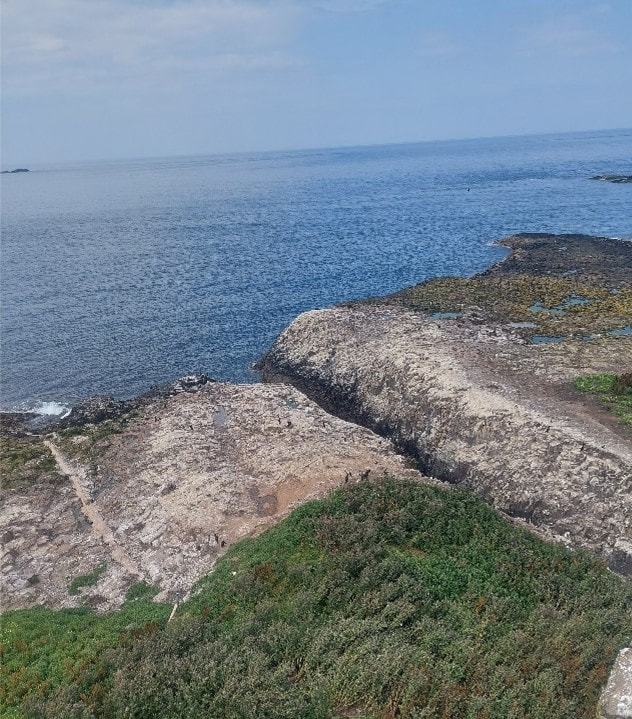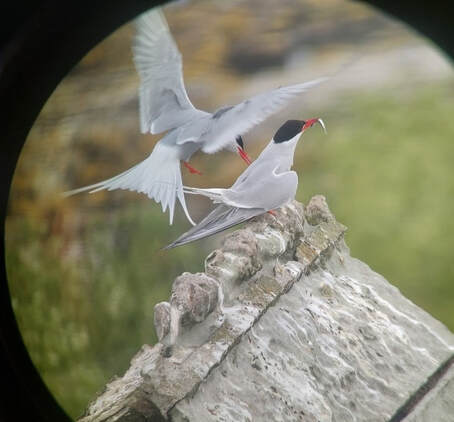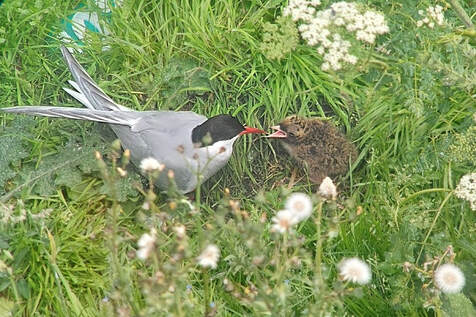|
Blog by Flora Burn, RSPB Research Assistant I was initially employed in 2023, as a HPAI research assistant and following the end of the breeding season; have since been working on the EU funded LIFE on the Edge project. After much perseverance, my goal of being employed in the conservation sector finally came to fruition. It can only be up from here! Donning full PPE in baking heat and pouring rain was made worth it to see some of the beautiful, special spots of the Northumbrian coastline. Home to thousands of seabirds. The Farne Islands was where I spent the majority of my visits through the week – also rotating around Lindisfarne and Long Nanny site. My first visit to the Farne Islands, I had few words. The beauty was extensive. I had never been so close to such a vast expanse of different seabirds, each drowning the other out with a cacophony of calls. Though it was sobering to see the avian flu wash through the colonies. As a research assistant, I monitored the birds daily; collecting and recording data, reminding myself that the data will help us to understand this deadly virus and inform future decisions for the protection of species. After many hours spent watching a variety of species, the sea of black and white (Kittiwakes, Guillemots, Razorbills, Shags) covering the rock faces gradually started to become patchy, with more and more heading off to their wintering grounds. I took my last boat ride back to land, after finally having (just about) found my sea legs, having watched thousands of young grow, fledge and leave. It was time to get back to work in a slightly less wild environment, but no less interesting. I was taken under the wing of a pre-existing team, and joined in on the EU funded project, LIFE on the Edge. My work helping with the creation of a toolkit guiding best practice of conservation projects managing beach nesting birds has taught me a lot. The aim is that it will aid the conservation of beach nesting birds across the UK. In helping to create a ‘toolkit’ it provides a central resource, a hub of information, for site staff, volunteers, members of the public and generally anyone of interest, to access. In essence, a go to guide / manual on how to protect beach nesters. Time was spent reading, researching and writing. Having worked as a Little tern warden previously, joining the project felt like a natural fit – having experienced the hard work and team effort it takes to protect these vulnerable species. I thought back to the days of trudging beaches for miles, lugging fencing, fishboxes, shovels, pleading with visitors to keep away from birds, doing everything possible to protect the little visitors whose numbers are so low, in efforts to protect them. I couldn’t help feeling like a manual would have been useful! I threw myself into the research and collation of information, determined to pull together an informative, accessible document. Some species I already had a good level of understanding of their needs, some I knew less about, such as the Mediterranean gull. Gulls seem to get a bad rep. They are an amber listed species, and with reduced suitable natural nesting sites, much like many other beach nesting species, numbers are dwindling. A few years ago, egg collectors decimated a mixed colony of Black-headed and Mediterranean gulls at Poole Harbour. 60-70% of nests were emptied by illegal collectors overnight, to be sold on and served in a few high-end luxury restaurants. This has a huge impact on breeding success. Disturbance, predation and climate change are all severely impacting seabirds, and we need to do what we can to put measures in place to offer the best chances of survival. Through my work, I have vastly expanded my knowledge of a variety of beach nesting bird species and their conservation practices. It’s encouraging to know that the work being produced will inform UK wide conservation in practice, with detailed sections providing information on species, monitoring methods, predator monitoring (trail cameras, fencing etc), predator management (chick shelters, audible deterrents, diversionary feeding etc), disturbance and management (signage, zoning, patrols etc), habitat management, and engagement with the community. We can only do our bit, and long may it continue. Editor's comment: Please note this toolkit is still being written, but will be placed on the LIFE on the Edge website once it is finalised. All photos are copyrighted: Flora Burn Instagram: @flora_burn
1 Comment
|
Archives
April 2024
Categories
All
Photo credits: Oystercatcher by Katie Nethercoat (rspb-images.com)
LOTE Logo credits: Saskia Wischnewski |

